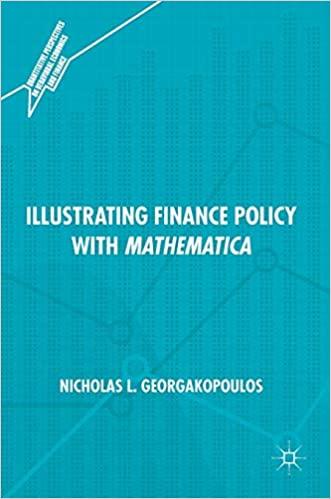Question
Capital Budgeting Problem: You have a business making widgets. You are considering buying a new machine which costs $1,000,000, plus an additional $100,000 for installation
Capital Budgeting Problem: You have a business making widgets. You are considering buying a new machine which costs $1,000,000, plus an additional $100,000 for installation and setup. You expect to be able to sell the machine for $55,000 at the end of its useful life in 5 years and will straight-line depreciate it to that Salvage Value. You also expect to need extra Net Working Capital of $25,000 to start the project today (an increase in Accounts Receivable for the initial sales). You will recover this NWC in Year 5. You are going to use an old computer to run the new machine. The old computer could be sold for $35,000 today if you werent repurposing it. You also have some old material that youre not going to use, which you had bought for $30,000 to make a prototype for some possible new products that didnt work out. You think you will be able to sell a new type of widget that you will make on this machine. You will sell 60,000 the first year, and expect to increase the number of widgets sold by 10% per year until the machine wears out at the end of Year 5. You are going to price the items at $20 each, and keep that same price per unit for the 5 years. You expect some customers who currently buy your original, cheaper widgets to switch to the new widgets, reducing Sales of the old widgets by $10,000 per year. You also think customers buying the new widgets will also buy an additional $20,000 worth of thingamabobs (another product, which you are already making) to improve the performance of the new widgets (NOTE: Ignore any changes in costs due to Side Effects). Each year, you expect $60,000 in fixed costs, and variable costs of 75% of revenue, to make the new widgets. Your tax rate is 35% and your cost of capital is 5%. a. Calculate the Initial Investment of the project. Show each item that goes into the Initial Investment on its own row, and label each row you use. b. Calculate i. EBIT ii. Net Operating Profit After Tax (NOPAT) iii. Operating Cashflow (OCF) for each year of the project. Show each item that goes into these calculations on its own row, and label each row you use. c. Calculate the Terminal Cashflow of the project. Show each item that goes into the Terminal Cashflow on its own row, and label each row you use. d. Calculate the Cash Flow From Assets (CFFA) for each year of the project. e. Calculate the projects NPV (IMPORTANT NOTE: The Excel NPV function does NOT work the same way as your calculators NPV function. If you use the Excel NPV, make sure to use it correctly). i. State whether the firm should accept or reject the project based on NPV. ii. Explain why you accepted or rejected the project based on NPV. In other words, what does it mean for the NPV to be positive or negative (whichever you calculated)? f. Calculate the projects IRR (use the Excel IRR function NO credit for just entering a number, even if correct). i. State whether the firm should accept or reject the project based on IRR. ii. Explain why you accepted or rejected the project based on IRR (i.e., what does IRR measure)? g. Calculate the Payback Period in years (to 1 decimal place). i. The Comptroller has a 3.5-year minimum payback. State whether they would accept or reject the project. ii. The CFO has a 4.5-year minimum payback. State whether they would accept or reject the project. iii. Explain why Payback Period might cause the Comptroller and CFO to disagree on whether to do the project (regardless of your calculation). iv. Cite one reason why Payback Period is inferior to both NPV and IRR for making investment decisions about capital budgeting projects (regardless of your calculation).
Step by Step Solution
There are 3 Steps involved in it
Step: 1

Get Instant Access to Expert-Tailored Solutions
See step-by-step solutions with expert insights and AI powered tools for academic success
Step: 2

Step: 3

Ace Your Homework with AI
Get the answers you need in no time with our AI-driven, step-by-step assistance
Get Started


